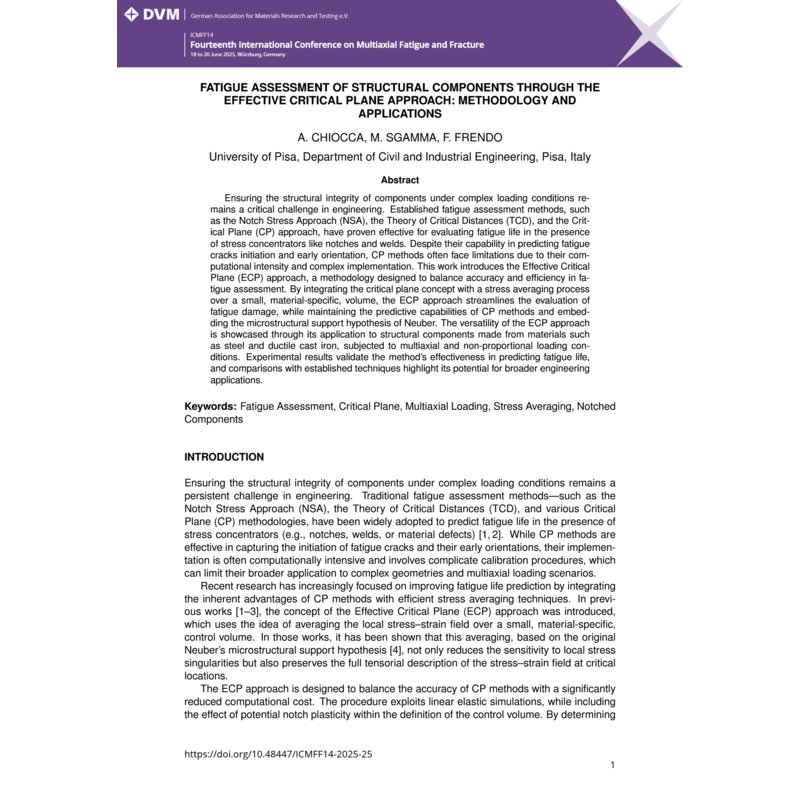- Nur online erhältlich



Ensuring the structural integrity of components under complex loading conditions remains a critical challenge in engineering. Established fatigue assessment methods, such as the Notch Stress Approach (NSA), the Theory of Critical Distances (TCD), and Critical Plane (CP) methods, have proven effective for evaluating fatigue life in the presence of stress concentrators like notches and welds. Despite its capability in predicting fatigue cracks initiation and early orientation, CP methods often face limitations due to their computational intensity and complex implementation. This work introduces the Effective Critical Plane (ECP) approach [1], a methodology designed to balance accuracy and efficiency in fatigue assessment. By integrating the critical plane concept with a stress averaging…

Datenschutzbedingungen (bearbeiten im Modul "Kundenvorteile")

Lieferbedingungen (bearbeiten im Modul "Kundenvorteile")

Rücksendebedingungen (bearbeiten im Modul "Kundenvorteile")
Ensuring the structural integrity of components under complex loading conditions remains a critical challenge in engineering. Established fatigue assessment methods, such as the Notch Stress Approach (NSA), the Theory of Critical Distances (TCD), and Critical Plane (CP) methods, have proven effective for evaluating fatigue life in the presence of stress concentrators like notches and welds. Despite its capability in predicting fatigue cracks initiation and early orientation, CP methods often face limitations due to their computational intensity and complex implementation. This work introduces the Effective Critical Plane (ECP) approach [1], a methodology designed to balance accuracy and efficiency in fatigue assessment. By integrating the critical plane concept with a stress averaging process over a small, material-specific volume, the ECP approach streamlines the evaluation of fatigue damage, while maintaining the predictive capabilities of CP methods and embedding the microstructural support hypothesis of Neuber. The versatility of the ECP approach is showcased through its application to structural components made from materials such as steel [1] and ductile cast iron [2], subjected to multiaxial and non-proportional loading conditions. Experimental results validate the method's effectiveness in predicting fatigue life, and comparisons with established techniques highlight its potential for broader engineering applications.